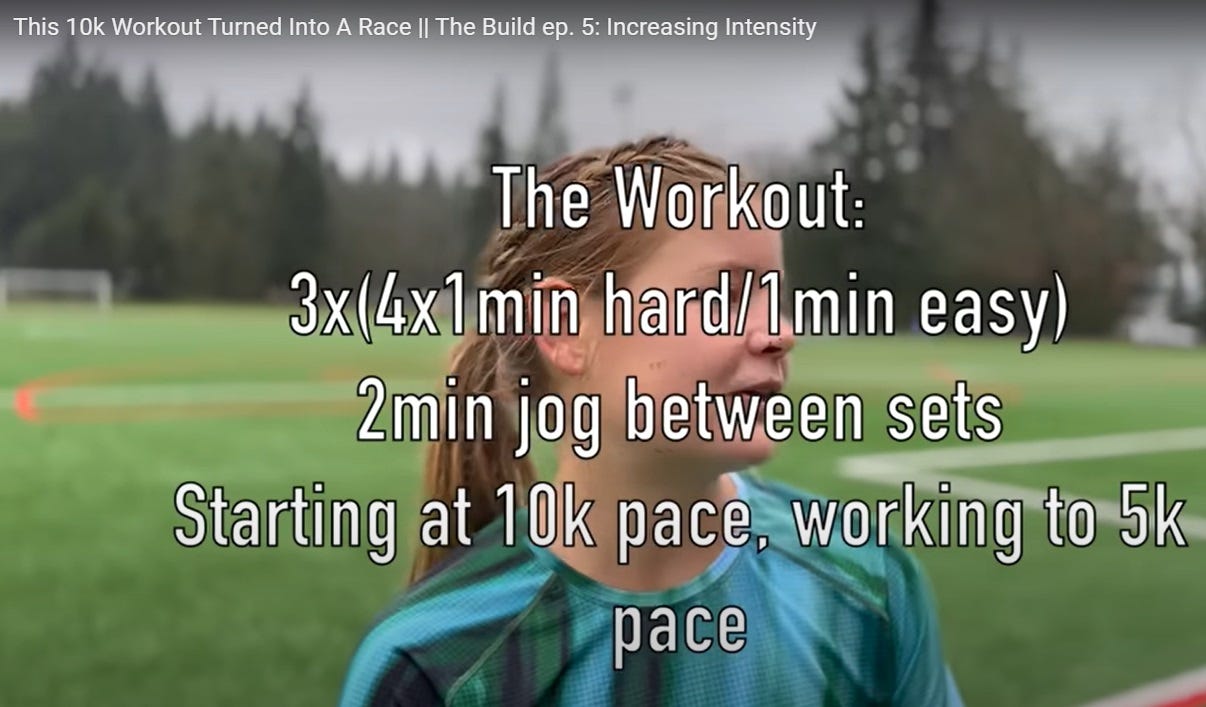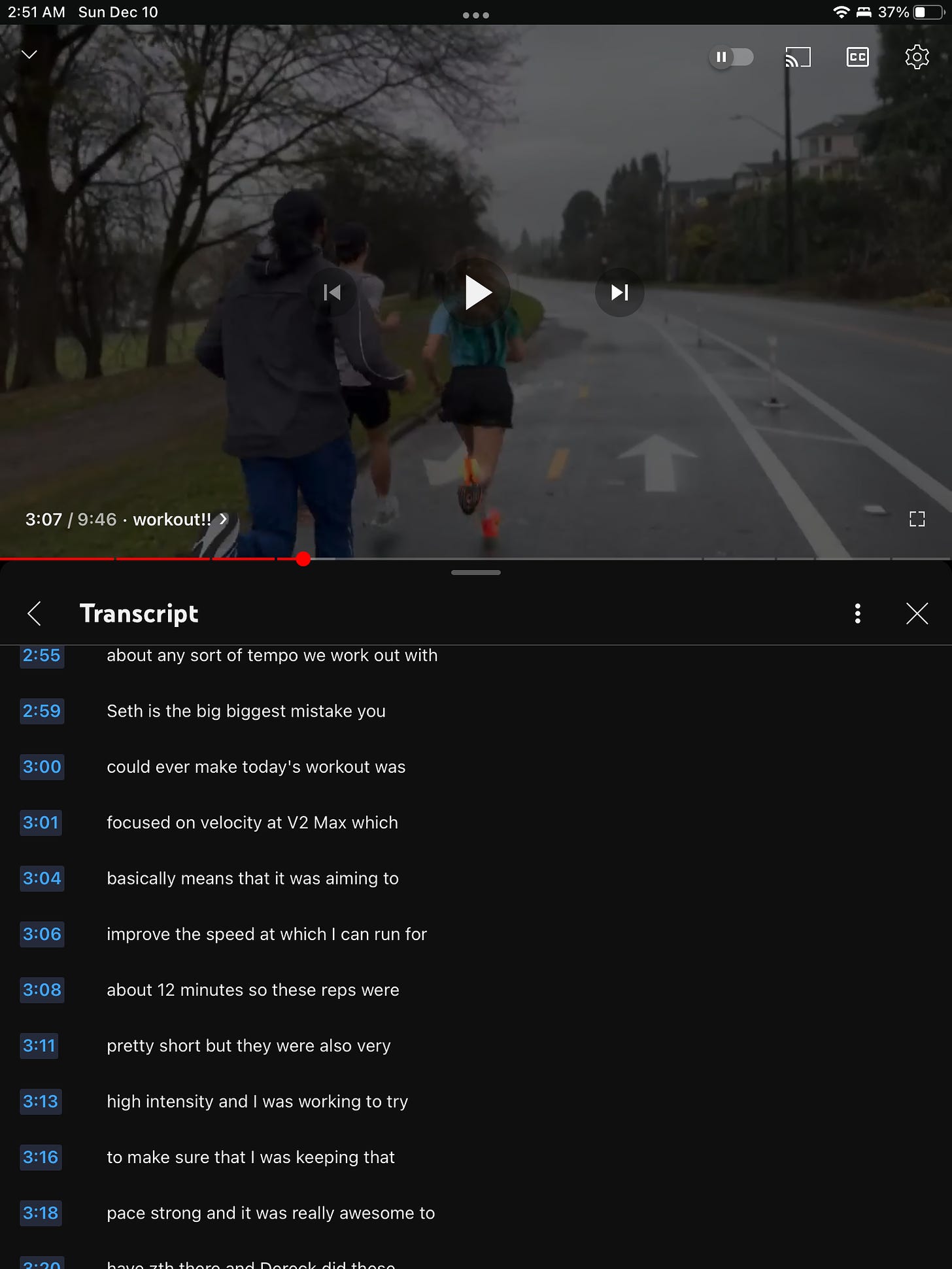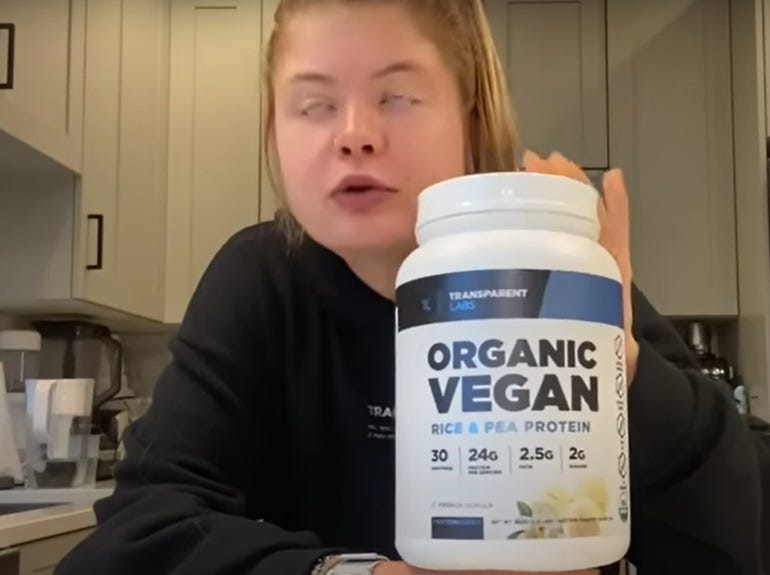A repetition workout that doesn't technically require any rest intervals is probably best structured differently
How might a runner shooting for an off-road 10K best prepare?
One predictable and reasonable consequence of repeatedly insisting that a given coach has no idea what he’s talking about is being subjected to examples of this coach’s prescribed workouts and asked, “Does this workout make any sense?”
Imagine attempting a 12-minute continuous run starting at 10K race pace and working smoothly down to 5K race pace. This would imply an overall start-to-finish pace increase of roughly 5 percent for most runners and closer to 4 percent for elites, well-trained slow-twitch-muscle-fiber-heavy runners spanning the ability spectrum, and dopers, three distinct attributes that can and do appear in various combinations. It also implies an average pace equivalent to ~7.5K race pace if done correctly.
Since no runner on Earth can cover 7.5K in under 19 minutes, it follows that every runner on the planet can run for at least 12 minutes at ~7.5K race pace, at least if the permitted pace range is reasonably small. It also follows that this workout is necessarily tougher for elite runners than for slugs, because the faster someone is, the more ground they cover in the allotted 12 minutes.
An example of an elite runner with demonstrated excellence over both 5,000 meters and 10,000 meters is Alicia Monson, the outdoor American record-holder in both events with times of 14:19.45 and 30:03.82. Monson’s pace per 400 meters is 68.76 seconds in the shorter event and 72.15 in the longer event, so any continuous run she does at constant acceleration starting at the slower pace and ending at the faster pace would entail an average pace of 70.46 seconds per lap. Twelve minutes is 720 seconds, which would allow Monson to cover 720/70.46 = 10.22 laps, or 4,087.42 meters.
Shortly before finishing this session, Monson would pass through 4,000 meters in 11:44.6. In an evenly paced 14:19.45 5,000 meters, she would pass the 4K point in 11:27.56, and in an evenly paced 30:03.82 10,000 meters, she’d hit the 4K mark in 12:01.53. Intuition suggests that this would be a stringent but eminently doable workout.
Now imagine the same session with a slight tweak: Monson gets to jog for one full minute after every minute of hard running. No, actually, let’s soften it up a little more and allow two minutes of jogging after the fourth and eighth hard one-minute segments.
If this seems like it would be easy—too easy properly call a repetition (or interval) workout, especially with the term “VO2 Max” thrown in—that’s probably a correct impression. This is also precisely the workout Allie Ostrander was recently assigned by her new coach, David Roche.
I was alerted to Ostrander discussing and performing this session on her YouTube channel by a reader, who wrote:
Maybe 'Im not understanding since I was never elite or sub-elite, but is a 12 min of 3 x (4 @ 1 min VO2max, 1 min jog, goal 10K pace down to 5K pace, she started at 5:01, was running 4:50s in the middle, and 4:48 at the end) supposed to be all that hard for someone at her level?
As written, no, the workout shouldn’t be that hard for anyone. But at 3:06 into the video, Ostrander throws some confusion into the scheme by stating—I believe—that she was shooting for vV̇O2max, the velocity (v) at which a runner is working just hard enough to make maximal use of the volume (V) of oxygen he or she inspires without tapping significantly into anaerobic metabolic processes of substrate utilization.
Ostrander’s estimate of 12 minutes is on the high side of most easily unearthed Web sources, but close enough given that the workout had so many breaks. Examples:
Runner's World: "Generally, VO2 max pace is something people can only sustain up to about 10 minutes." (Also, "Train too hard, and you'll probably burn out or get injured. Train too gently and you simply won't make the most of your potential (but hey, that's okay.)
Training Peaks: "Efforts at your VO2 max are well above your LT and can approximately be held between 6 and 10 minutes."
R.E.I.: "A moderately fit person can sustain a VO2 max pace for roughly 6 to 8 minutes."
Tom Schwartz puts the duration for which a runner can sustain vV̇O2max at closer to 7 minutes. This seems to hew most closely with whatever passes for meaningful research in this area.
Ostrander’s personal bests for 5,000 meters and 10,000 meters are 15:18 and 32:06, right around 4:55 and 5:10 per mile respectively. Therefore, in evidently moving from 5:01 pace to 4:48 pace in her one-minute hard sessions throughout the session, Ostrander was likely being true to her vV̇O2max—even if “starting at 10K pace, working to 5K pace” is by definition something else.
The main problem here is that one-minute segments with one-minute rests aren’t going to do much for boosting V̇O2max (and with it, vV̇O2max) unless they’re done with such monumental intensity that the athlete’s heart rate stays relatively high during the jogs. Ostrander seemed to pick up on this issue herself:
I have no idea what Mr. Roche was thinking when he wrote this session; this would be almost impossible since Roche himself doesn’t appear cognizant of most the thoughts ricocheting through his own head. But a solid rule of thumb is that if you want to offer a distance runner currently aiming for a 10K cross-country race a workout that helps boost vV̇O2max, then don’t write one that could be done without any rest intervals at all. Otherwise, while the session will obviously feature more training utility than merely jogging around would, it’s not at all clear that this represents an especially clever use of workout-day time.
With all of that duly deconstructed, I don’t think Ostrander made this video to promote a workout she believed was especially difficult or noteworthy. She has over 100,000 42,000 YouTube followers, and I think she just uses whatever fodder she can for her videos, because I assume she makes money this way. I can think of far more ridiculous things to make videos about, even when these videos, when made by trail runners, necessarily involve shilling for products like vegan gunkpaste.





